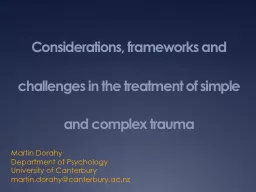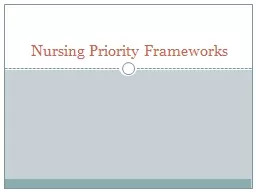PPT-Considerations, frameworks and challenges in the treatment
Author : celsa-spraggs | Published Date : 2016-03-18
and complex trauma Martin Dorahy Department of Psychology University of Canterbury martindorahycanterburyacnz Outline For PTSD traumafocused interventions central
Presentation Embed Code
Download Presentation
Download Presentation The PPT/PDF document "Considerations, frameworks and challenge..." is the property of its rightful owner. Permission is granted to download and print the materials on this website for personal, non-commercial use only, and to display it on your personal computer provided you do not modify the materials and that you retain all copyright notices contained in the materials. By downloading content from our website, you accept the terms of this agreement.
Considerations, frameworks and challenges in the treatment: Transcript
Download Rules Of Document
"Considerations, frameworks and challenges in the treatment"The content belongs to its owner. You may download and print it for personal use, without modification, and keep all copyright notices. By downloading, you agree to these terms.
Related Documents






![[eBOOK]-JavaScript Frameworks for Modern Web Development: The Essential Frameworks, Libraries,](https://thumbs.docslides.com/971649/ebook-javascript-frameworks-for-modern-web-development-the-essential-frameworks-libraries-and-tools-to-learn-right-now.jpg)
![[PDF]-JavaScript Frameworks for Modern Web Development: The Essential Frameworks, Libraries,](https://thumbs.docslides.com/976843/pdf-javascript-frameworks-for-modern-web-development-the-essential-frameworks-libraries-and-tools-to-learn-right-now.jpg)






